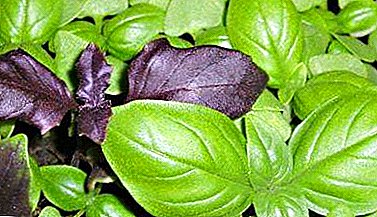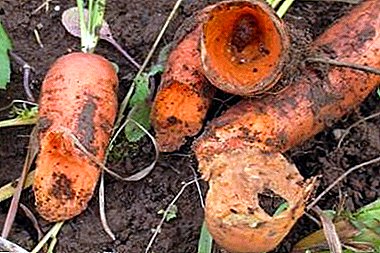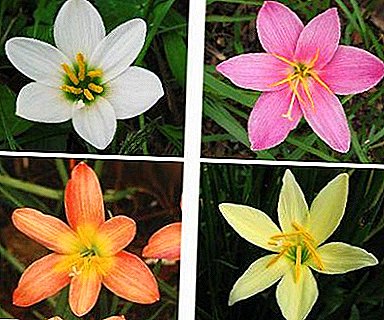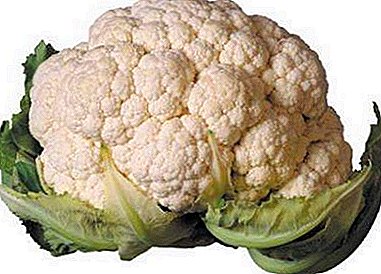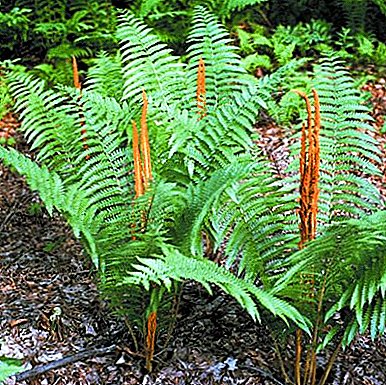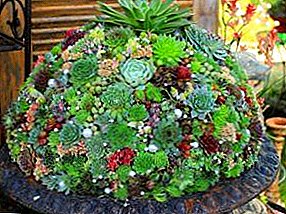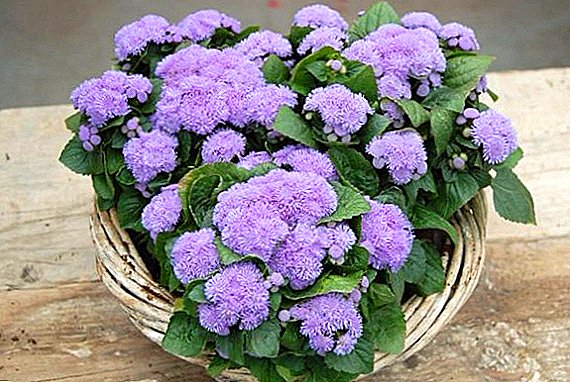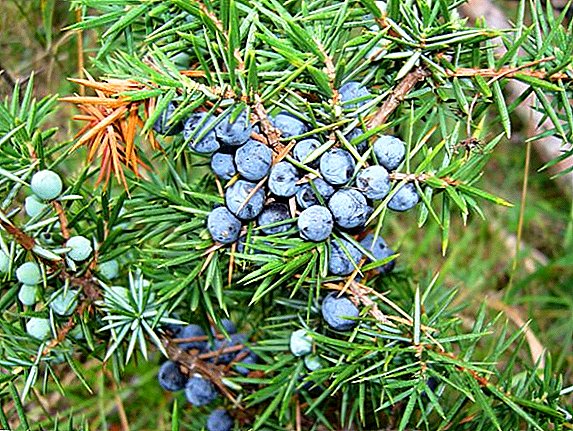 Juniper - a beautiful plant that is increasingly used in landscape design. But in order to choose the right kind of it, you need to know exactly which group juniper belongs to. He is a bright representative of the oldest family of cypress, evergreen conifers, which will not cause any problems in growing even a novice gardener. Juniper appeared on earth more than 50 million years ago, thanks to which people have long appreciated the beauty of this plant, using it to decorate gardens for more than one millennium.
Juniper - a beautiful plant that is increasingly used in landscape design. But in order to choose the right kind of it, you need to know exactly which group juniper belongs to. He is a bright representative of the oldest family of cypress, evergreen conifers, which will not cause any problems in growing even a novice gardener. Juniper appeared on earth more than 50 million years ago, thanks to which people have long appreciated the beauty of this plant, using it to decorate gardens for more than one millennium.
Did you know? Juniper is used as a flavoring for juices, fruit drinks and compotes. Its fruits give the meat an exotic savory taste and aroma. Marinades, prepared using juniper, are especially bright and memorable, and when added to pickles, juniper berries significantly enrich their flavor and aromatic palette.
 Juniper grows in the form of trees, like columns, spreading shrubs or fluffy shoots, dense carpet lining the ground. Evergreen juniper branches are decorated with needles or flakes of needles. Almost all representatives of juniper are dioecious: male plants are pollinators, and female plants produce a generous harvest of cones, from which tasty, medicinal fragrant jam is made. Today in the world there are about 70 varieties of juniper, so let's look at what types and varieties of juniper are common in our time.
Juniper grows in the form of trees, like columns, spreading shrubs or fluffy shoots, dense carpet lining the ground. Evergreen juniper branches are decorated with needles or flakes of needles. Almost all representatives of juniper are dioecious: male plants are pollinators, and female plants produce a generous harvest of cones, from which tasty, medicinal fragrant jam is made. Today in the world there are about 70 varieties of juniper, so let's look at what types and varieties of juniper are common in our time.
Juniperus (Juniperus communis)
Common juniper is a low evergreen coniferous tree or shrub, from 5 to 10 meters high. In the most favorable conditions, the plant can reach 12 meters, with a trunk diameter of 0.2 meters. The dense crown of trees may have a cone-shaped, and in bushes an ovoid shape.
The plant has a gray-brown fibrous bark and reddish-brown shoots. The branches of the plant are covered with needle triangular needles, pointed at the end (its width varies from 0.1 to 0.2 millimeters, and the length can reach 1.5 centimeters). On the upper side of the needles is stomatal strip.
All the needles are covered with a whitish wax bloom, which persists on the branches up to four years. Juniper bushes bloom in May, with female flowers having a green and male flowers with a yellow color. The cones are rounded and can be in diameter from 0.6 to 0.9 centimeters. Juniper of this species grows very slowly. Its annual growth does not exceed a height of more than 15 cm, and a width of more than 5 cm per year. On average, the life span of one bush reaches 200 years.
Did you know? Other common names for juniper are veres or mozhevel. In Ukraine, the plant is known as “the most beautiful one”, and in Latin its name is “Juniperus communis”.
Common juniper can be found in Europe, North America, Siberia and even North Africa. In nature, juniper grows in the undergrowth of spruce and pine forests and forms impenetrable thickets in cutting areas. He prefers moderately moist, well-drained sandy loam soils, but can grow on all types of soils.
Juniper Virginia (Juniperus virginiana)
Juniper virginsky is an evergreen, rarely dioecious tree. This is a tall juniper, capable in favorable conditions to reach 30 meters in height. Young trees have narrowly ovoid crown, and with age become covered with widely standing branches. The trunk diameter of adult plants can reach 150 centimeters and is covered with gray, red-brown or dark brown flaking longitudinally fissured bark.
Young thin shoots have dark green bark and have an obscure tetrahedral shape. The branches of the plant are covered with gray-green needles, which with the onset of frost acquires a brown tint. During the period of ripening, numerous dark-blue cones form on the trees, with a slight bluish bloom up to 0.6 centimeters in diameter. The fruits are ready to be harvested in October, but they can remain on the trees for a long time, which significantly improves their taste characteristics.
The plant received the status of culture in 1664. Virginia juniper is very often used in landscape design, as it is one of the most resistant varieties to adverse conditions. In northern latitudes, this species is very often used as an analogue of pyramidal cypress trees.
Did you know? Juniper is perfect for aromatherapy, as its smell has a strengthening effect on the nervous system, and long walks through juniper groves help to get rid of insomnia, nervous overstrain and headaches.
In nature, virgin juniper can be found in North America, from Canada to Florida. It grows in the mountains, on rocks, on the shores of the ocean and rivers, less often - in swamps.
The most common varieties of Virginia juniper:
- Juniper variety "Glauka" or "Glauca" was bred in 1855. The plant has a kolonovidny form and differs in intensive rates of development. On average, it can reach from 5 to 10 meters in height and has almost vertical branches. Due to this, the tree forms a fairly dense crown, which slightly expands as the tree grows older. The branches of culture are covered mostly with scaly needles. Acicular needles can be found only in the depths of the crown.
- The variety "Globosa" is a short juniper obtained in 1891. This is a dwarf, slow-growing variety, has a flattened round crown, reaching up to 1 meter in width. The plant has short, creeping skeletal branches and slightly ascending, short, protruding and dense shoots covered with scale-like bright green needles.
- "Blue Cloud" was received in 1955. A large shrub with a loose, indefinite outline of a crown, having long spreading branches covered with grayish-green needles. Juniper varieties "Blue Cloud" very often can be seen on the garden plots in areas not characterized by comfortable weather conditions.
Juniper horizontal (Juniperus horizontalis)
The juniper horizontal is the closest relative of the Cossack juniper. Externally, the plant is a creeping shrub pressed to the ground, reaching 1 meter in height and covered with long branches, on which bluish-green tetrahedral shoots are formed, pubescent with thick gray or green needles (with the onset of cold weather it acquires a brown color). Reproductive branches have needle-shaped elongate-lanceolate leaves, from 3 to 5 centimeters long and about 1 centimeter thick, saber-shaped, curved at the back.
Old branches are covered with bluish-black scaly leaves, with a bluish bloom. They have tiny resin glands, reaching up to 2.2 centimeters in length and up to 1.5 millimeters in width. Despite the original appearance, juniper shrubs of this variety are quite rare in the collections of amateur gardeners. The species was reckoned among the cultures in 1840.
The juniper horizontal was taken as the basis for the creation of many varieties:
- Variety "Agnieszka" - a low shrub, which are formed adjacent and obliquely lifting long skeletal branches. The needles on the bushes of this juniper can be of two types, but at the same time it is always acicular, bulging and thick, bluish-green, and after the first frosts a slightly lilac color.
- The shrubs of the Andorra Variegata variety, in their early stages, have a dense rounded crown, which, as the plant grows, becomes funnel-shaped. Their branches are covered with acicular, half-pressed, mostly green needles, which in some areas may have a cream color.
- Variety "Bar Harbor" was bred in 1930 in the United States. The bushes have a dense creeping shape and are formed by thin lying branches spread in different directions. Side shoots ascending. Small, half-pressed, grayish-green leaves, after frosts become purple color.
Juniper Chinese (Juniperus chinensis)
Chinese juniper is a dioecious or monoecious tree, reaching a height of 8 to 25 meters and having a pyramidal crown. Very rarely, the plants of this species are bushes spread wide, tightly pressed to the ground. The trunk of the trees is covered with a grayish-red, flaking bark. Young shoots have a dark green color and a fuzzy tetrahedral shape. The branches of the plant are covered mostly with scale-like, pairwise-opposite foliage, up to 3 millimeters long and no more than 1 millimeter wide.
The leaves have an oblong-ovate shape, pointed at the end and slightly curved inward, and therefore appear dull and tightly pressed to the shoots. From the inside they have stomatal strips, and on the back - elliptical glands. The plant produces spherical, slightly elongated cones of dark blue or almost black color, reaching a diameter of 4 to 10 millimeters.
Cossack juniper (Juniperus sabina)
Cossack juniper - the most unpretentious and the most common representative of his family. Therefore, if you are going to plant this species on your plot, then you will probably be interested to find out how quickly the Cossack juniper grows. Just imagine: a Cossack juniper bush, about 10 years old, can reach only 0.3 meters in height, which makes it one of the slowest-growing plants. Due to this feature, it is very often used in landscape design.
This type of dwarf juniper is completely unpretentious, it easily tolerates both lowering and increasing temperatures, indifferent to poor-quality watering and can withstand the strongest winds. Its main disadvantage is that it belongs to poisonous plants.
Cossack juniper has a massive root system that can go deep into the ground, so that even in the most arid years its bushes can do without watering at all. The branches of the plant are covered with dense small-needle foliage gray-green color. During ripening, they are covered with rounded (up to 7 cm in diameter) dark blue fruits, with a bluish bloom.
Important! Even when caring for Cossack juniper, one must be extremely attentive, since its leaves, fruits and branches contain potent poison that can seriously harm human health.
The most popular varieties of Cossack juniper:
- The variety "Broadmoor" grows rapidly in width, with no more than 60 centimeters reaching the height of its plant. As the shrubs grow, they form a dense, emerald green carpet that has excellent decorative characteristics.
- Plants of the "Femina" variety are spreading along the ground, and their shoots at the ends rise upwards, which creates the impression of a huge number of small juniper trees. The width of the bushes varieties can reach up to 6 meters, while even in the most favorable conditions, their height does not exceed 2 meters.
- "Cupressifolia" is a dwarf variety, reaching no more than half a meter in height, but at the same time wide, the plant, at the age of about 10 years, can reach up to 5 meters. Externally, the bushes of this variety look quite tidy and have high decorative characteristics, which turned them into real favorites of landscape designers.
Juniper Coastal (Juniperus conferta)
Coastal juniper is a flat-growing dwarf shrub with a pleasant pine aroma. The plant has creeping shoots capable of lining the soil with a dense carpet. At the age of nine, plants of this variety reach a height of only 20 centimeters, but at the same time the size of their crowns can reach up to one meter. The branches of the bush are covered with dark green needles, decorated with a white-blue stripe on the upper side, which gives it a gray tint. In autumn, coastal juniper branches are covered with dark blue cones with a bluish bloom.
Important! When planting juniper, be careful when choosing a landing site. The fact is that this plant is home to many fungal infections and close proximity to fruit crops can contribute to their infection with dangerous diseases.
The plant loves sunny places, but at the same time grows well in partial shade. Due to its compact size, in landscape design it is used as a groundcover for decorating rock gardens and rocky gardens.
Juniper rocky (Juniperus scopulorum)
Rock juniper is a dioecious shrub or tree from 10 to 13 meters high. Cultural plant has a more compact size than the specimens growing in their natural environment. Young shoots are unclear tetrahedral shape and can reach up to 1.5 millimeters in diameter and not more than 2 centimeters in length.
The bush has a dark green or gray-gray scaly foliage, with an opposite arrangement and an ovate-rhombic form, 1-2 mm long and up to 1 mm wide. On the bushes also found needle-shaped leaves up to 12 millimeters long and up to 2 millimeters wide. During the period of ripening on the bushes spherical dark blue berries are formed, covered with a slight smoky bloom.
Important! Remember that excessive consumption of berries and preparations made on the basis of juniper, can cause poisoning, disruption of the cardiovascular system, as well as contribute to the emergence of severe allergic reactions.
 The juniper rocky can be called the pet of landscape designers. It is very often used for gardening gardens, parks, garden plots and the territory of medical and recreational facilities. The variety looks great in rockeries, rock gardens and heather gardens. Especially popular are varieties with pyramidal and kolonovidnoy crown.
The juniper rocky can be called the pet of landscape designers. It is very often used for gardening gardens, parks, garden plots and the territory of medical and recreational facilities. The variety looks great in rockeries, rock gardens and heather gardens. Especially popular are varieties with pyramidal and kolonovidnoy crown.
Juniper Medium (Juniperus media)
Juniper average is a plant, reaching up to 3 meters in height and having a dense spreading crown up to 5 meters in width. The crown of the tree is formed by ascending arcuate branches with slightly lowered ends. The needles are pleased with their rich emerald green color and decorated from the inside with a white stomatal strip. On the old parts of the branches and inside the crown can be found needle-shaped leaves. At the ends of young shoots scaly needles prevail.
The most common varieties of juniper average:
- "Blue and Gold" was bred by Dutch breeders in 1984. This is a small shrub with a fluffy and fairly loose crown. The plant in height can reach up to 1.5 meters. The shrub is formed horizontal, obliquely ascending, with slightly drooping ends of the branch. On the plant you can find two types of needles: bluish-gray or cream color. The variety does not tolerate severe frosts, and therefore is not suitable for cultivation in the northern regions.
- "Gold Coast" was received in the USA in 1965. Bushes have a compact, dense form and can reach up to 1 meter in height and up to 3 meters in width. Shrubs of varieties form branches with protruding horizontally protruding ends, covered with mostly scaly green needles.
- "Hetzii" - the variety was also bred in the United States in 1920. The shrub can reach up to 4 meters in height and is characterized by intensive rates of development. It has a broadly ovate or loose cup-shaped crown, reaching up to 6 meters wide. The main feature of the variety is that its branches do not hang at the ends. The shoots are covered with mostly scaly grayish-green needles. Acicular leaves are found only in the middle of the bush.
Juniper scaly (Juniperus squamata)
Juniper scaly - evergreen, densely branched shrub up to one and a half meters in height. The plant has a dark brown bark and lanceolate, tough, sharp dark green needles with a length of 0.5 to 0.8 millimeters. Shyshkoagody have almost black color. The plant is used primarily for landscaping parks and squares, but can also be the main decoration of any alpine slide. The lack of variety is that dried needles on its shoots do not fall off for several years, and this significantly reduces the decorative characteristics of adult bushes.
The most popular juniper flake varieties:
- The "Blue star" variety has fascinated gardeners with its compact size and a semicircular wide crown, which significantly improves its decorative characteristics. Its bushes barely reach one meter in height. The variety is light-requiring, but it grows very slowly, its annual growth does not exceed 10 centimeters. It can be used for single or group plantings.
- "Blue carpet" bush has a flat shape and is characterized by an intensive pace of development, which allows him to 10 years with growth of 30 centimeters, overgrown with a crown from 1.2 to 1.5 meters wide. The branches of the bush are covered with gray-blue, up to 9 millimeters in length and not more than 2 millimeters in width with needles having a sharp edge. The variety was created in 1972 in Holland, and in 1976 he was awarded a gold medal for high decorative qualities.
- "Меуеri" - это один из самых известных и любимых садоводами сортов, обладающий высокими декоративными характеристиками и не требующий особого ухода. Взрослое растение может достигать от 2 до 5 метров в высоту. На ветвях формируются прямые, коротки побеги, покрытые голубовато-белой хвоей.
 Growing almost any juniper will allow you not only to significantly improve the decorative characteristics of the dacha, but also to get the strongest medicine that can help get rid of a huge number of diseases.
Growing almost any juniper will allow you not only to significantly improve the decorative characteristics of the dacha, but also to get the strongest medicine that can help get rid of a huge number of diseases.


